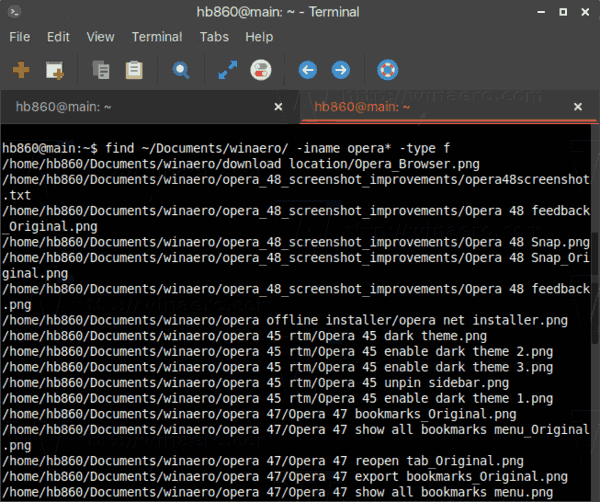

- #C TERMINAL FIND FILE HOW TO#
- #C TERMINAL FIND FILE INSTALL#
- #C TERMINAL FIND FILE CODE#
- #C TERMINAL FIND FILE WINDOWS#
I hope you found this informative and helpful, stay tuned for more tutorials on similar topics.You may also checkout our training program to get in-depth knowledge on jQuery along with its various applications, you can enroll here for live online training with 24/7 support and lifetime access. With this we come to the end of this blog on ‘How To Compile C program in Command Prompt’.
#C TERMINAL FIND FILE CODE#
Here, our Armstrong code is executed and we got output for this code. This is done by simply giving the name of the executable file without any extension. In the next step, we can run the program. In our case, we will use Armstrong.c.Īfter this, an executable file will be created in the directory that your c file exists in. To do this we need to use the command gcc followed by the name of the program we are going to execute. Our program is already in the user directory so, we don’t need to change it.

We need to pass the name of the directory in which the program is stored. You can do that by using the command ‘ cd’, which changes the directory. Printf("%d is not an Armstrong number.",num) Ĭhange the working directory to where you have your C program. You can use a variation of this command to find any file or. Printf("%d is an Armstrong number.",num) 1.Youll typically use the find command with the syntax find /path -type f -iname filename. I have written a program to find the Armstrong Number and store it in the directory user.
#C TERMINAL FIND FILE WINDOWS#
You can search for cmd in your windows system to open the command prompt.Ĭreate a c program and store it in your system.
#C TERMINAL FIND FILE INSTALL#
If not you need to download a gcc compiler and install it. Run the command ‘gcc -v’ to check if you have a compiler installed.

#C TERMINAL FIND FILE HOW TO#
So let us get with this article on how to compile C progam in command prompt, How to Compile C Program in Command Prompt? In this article we would be understanding how to compile C program in command prompt. If you want the search to start somewhere. find searches recursively in all the directories below the given path. at the start denotes the current directory. This will list all files with the extension. When it opens, run the command below: find. The command prompt has a set of steps we need to perform in order to execute our program without using a GUI compiler. Just press Ctrl + Alt + T on your keyboard to open Terminal. To go to D drive, just type d:, and the Command Prompt will listen to the new drive.We usually use a compiler with a graphical user interface, to compile our C program.which enables you to easily move one folder up. Therefore, you should change the Windows drive path in the command line as shown below. If your target file is located in D: drive, you won’t find it anywhere in the Windows folder from the C: drive. How to Change Directories in Windows Command Prompt for Easy Access to Folder Paths No matter where your text is in the actual name of the file, that file will be listed in the results. If you add an asterisk at each end of the search term, you will cover all the bases.If you use it at the beginning, your search will only include results with your text at the end.Adding an asterisk at the end of the name, like business*, will find all the files with your search term at the beginning of the name.It indicates that the search will locate all file names that contain your search term. * is used by command-line apps as a wildcard./s tells dir to search all sub-directories.The backslash (\) tells dir to search from the root directory of the current drive.dir is a command used to show files in the current directory but can also locate data elsewhere in the system.What do all the terms mean in the command line search request? The path attribute defines the starting directory or directories where find will search the files. expression The options attribute controls the treatment of the symbolic links, debugging options, and optimization method. The correct file path can be easily identified by the size of the folder. The general syntax for the find command is as follows: find options path.



 0 kommentar(er)
0 kommentar(er)
